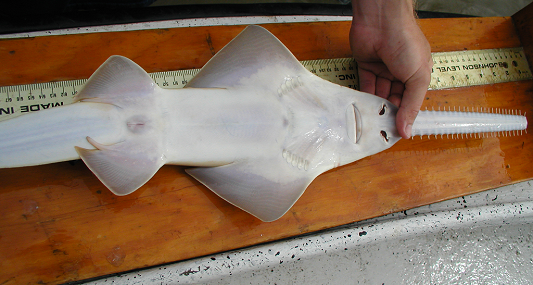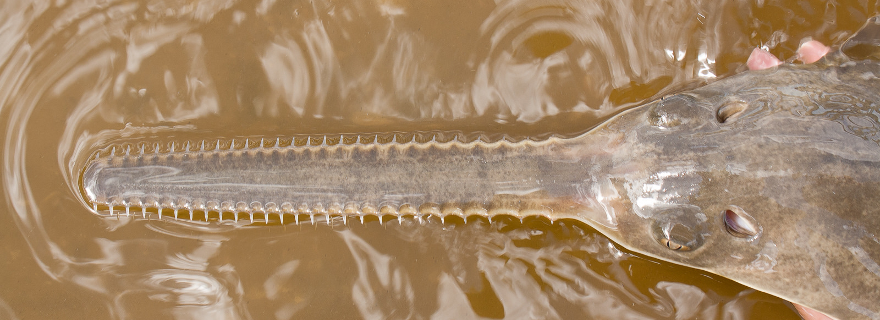By Nadine Slimak
The Convention on International Trade in Endangered Species (CITES) voted recently to ban the international trade in sawfish – including the endangered smalltooth sawfish that today is found living mostly in Southwest Florida waters.
[su_service title=”Historically, Sawfish was a popular sportfish in Florida” icon=”icon: image” size=”18″][su_slider source=”media: 9331,9330,9332″ link=”image” width=”340″ height=”460″ responsive=”no” title=”no” centered=”yes” pages=”no” autoplay=”0″][/su_service]
The ban – which stops the sale of most sawfish species and their parts worldwide – will offer additional protection for the smalltooth sawfish found in Florida, said Tonya Wiley, senior biologist in Mote’s Center for Shark Research.
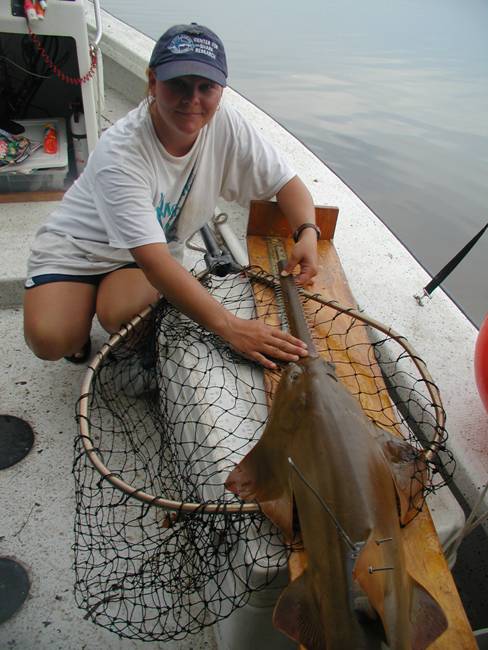
“Smalltooth sawfish once ranged as far as New York and Texas,” Wiley said. “Today, their numbers are greatly reduced and they’re mainly foundin the 10,000 Islands, Everglades National Park and as far north as the Caloosahatchee River in Fort Myers. This new protection under CITES is another step in getting smalltooth sawfish out of the marketplace.”
In 2006, smallltooth sawfish parts came off the online auction block at eBay when officials there banned the trade of smalltooth sawfish from its online auction sites in January 2006.
Now, CITES provides an international framework for preventing trade in endangered species and regulating trade in species at risk among the 171 countries which are party to the agreement. As the U.S. management authority for CITES, the U.S. Department of the Interior’s Fish and Wildlife Service (FWS) is responsible for implementing all aspects of CITES within the United States. FWS enforces CITES regulations for CITES-listed species and their parts and products being transported into or out of the United States.
The Ocean Conservancy successfully petitioned to have the smalltooth sawfish added to the U.S. Endangered Species List. Mote’s Center for Shark Research, which initiated sawfish research in 1999, provided much of the scientific data to justify the listing. Smalltooth sawfish were the first marine fish species in U.S. waters characterized as endangered when they were added to the list in 2003.
Mote’s research was used to create the Smalltooth Sawfish Recovery Plan, a recovery plan mandated under federal law, due to be released this summer. Wiley said she and other members of the Recovery Implementation Team, including Sonja Fordham of the Ocean Conservancy, will use ongoing research results to make sure recovery efforts are working.
“We congratulate the U.S. government for their persistence and leadership toward this long-awaited global protection for sawfish,” said Fordham, director of Ocean Conservancy’s Shark Conservation Program, who serves on the U.S. Sawfish Recovery Team and spoke in favor of the proposal. “These exceptional rays are among the most endangered fish in the world and urgently need protection from a variety of threats, including trade in the valuable fins and saws. This landmark action will bolster the effectiveness of U.S. protections for smalltooth sawfish and should spark urgently needed conservation programs for other sawfish species around the world.”
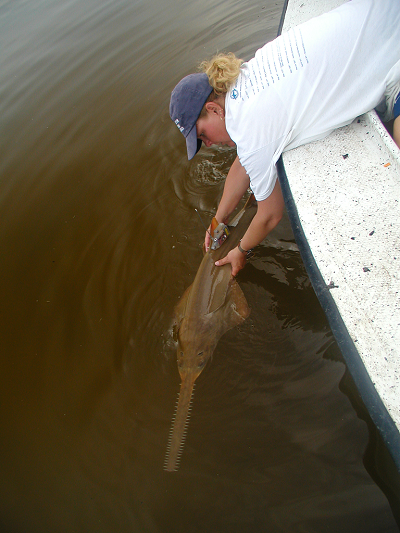
Because it has been listed as endangered, it is already illegal to harm, kill, trade or possess sawfish or sawfish parts in the U.S. “Now, CITES international trade restrictions add an additional layer of much-needed regulation worldwide in the sale of sawfish parts – especially the rostrum, or saw,” Wiley said. “This listing eliminates one more incentive to keep captured sawfish.”
Sawfish fins are highly valued in the Asian shark-fin soup market. Their saws are sold as curios, used to produce traditional medicines and as ceremonial weapons. Teeth from saws have long been popular as artificial spurs in the cockfighting industry and sawfish skin and flesh have been used for the production of leather and as food.
Live sawfish are collected from the wild and traded in the aquarium industry; this new CITES listing still allows for limited trade in live specimens of one species (a freshwater sawfish found in Australia), for conservation purposes.
Worldwide, there are seven species of sawfish and all are classified as Critically Endangered by the World Conservation Union (IUCN).
It is illegal to catch or harm a sawfish. However, it can be difficult to avoid catching them while fishing for other species. Anglers who do catch sawfish should release the animal quickly and safely (more information). Report sightings to Sawfish@MyFWC.com or (941) 255-7403. Information gathered from the public helps researchers determine distribution and seasonal variation of the remaining sawfish population, the habitats they are using and any pressures that may continue to threaten their recovery. For more information visit http://myfwc.com/research/saltwater/fish/sawfish/.
Article originally published Summer 2007, updated in June 2017 to reflect new reporting methodology.
[su_note note_color=”#4094ad” text_color=”#ffffff”]About Smalltooth Sawfish
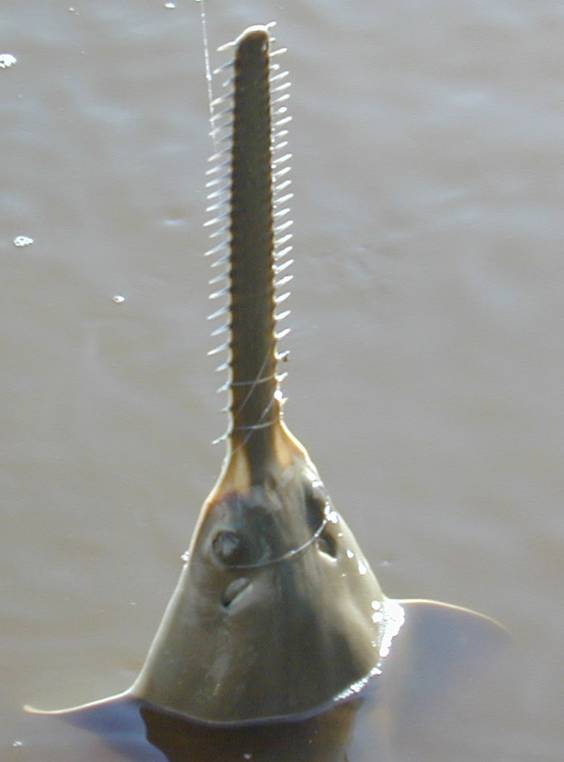
Common name: Smalltooth sawfish
Scientific name: Pristis pectinata
Size: Smalltooth sawfish can grow to 20 feet and weigh up to 2,000 pounds. Normally, the species is believed to top out at about 16 feet.
Where they’re found: Primarily in the protected areas of Everglades National Park and Ten Thousand Islands. Regularly encountered from Charlotte Harbor to the Florida Keys; occasionally as far north as the Panhandle and Georgia, and as far south as Cuba
About the saw: Sawfish get their names from their long saw-like snout, or rostrum, which resembles a hedge trimmer. Young sawfish use their saws to grub along the bottom as they feed on benthic creatures. Older fish use their saws to cut through fish schools, impaling fish on the saw.
Etc.: Smalltooth sawfish are actually a species of ray and are classified as elasmobranches, meaning their skeletons are made of cartilage. They are also ovoviviparous, meaning they give birth to live young. In the womb, the teeth along the rostrum are covered by a sheath that protects the mother during birth.
Status: Listed as endangered by the U.S. National Marine Fisheries Service.
